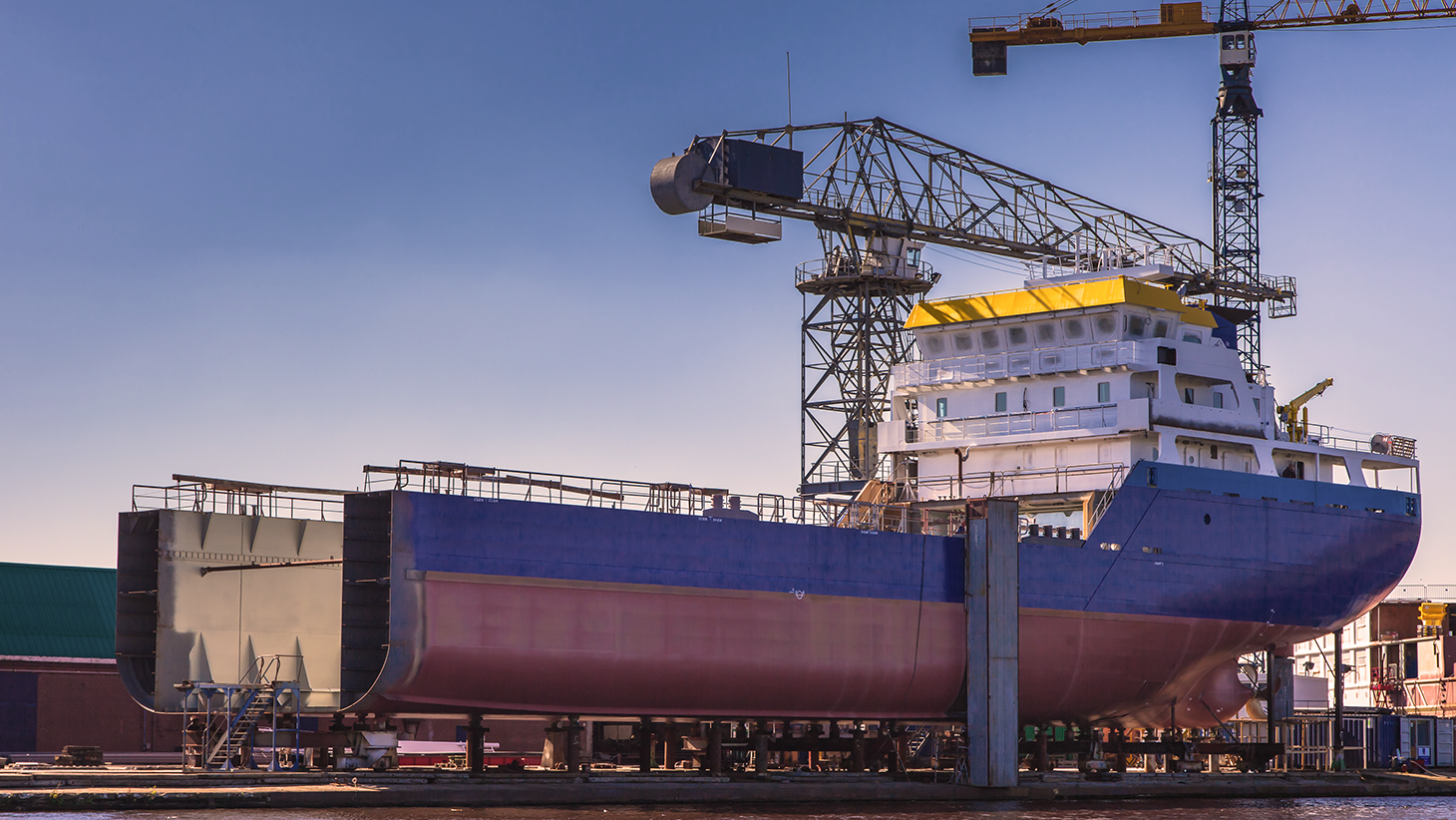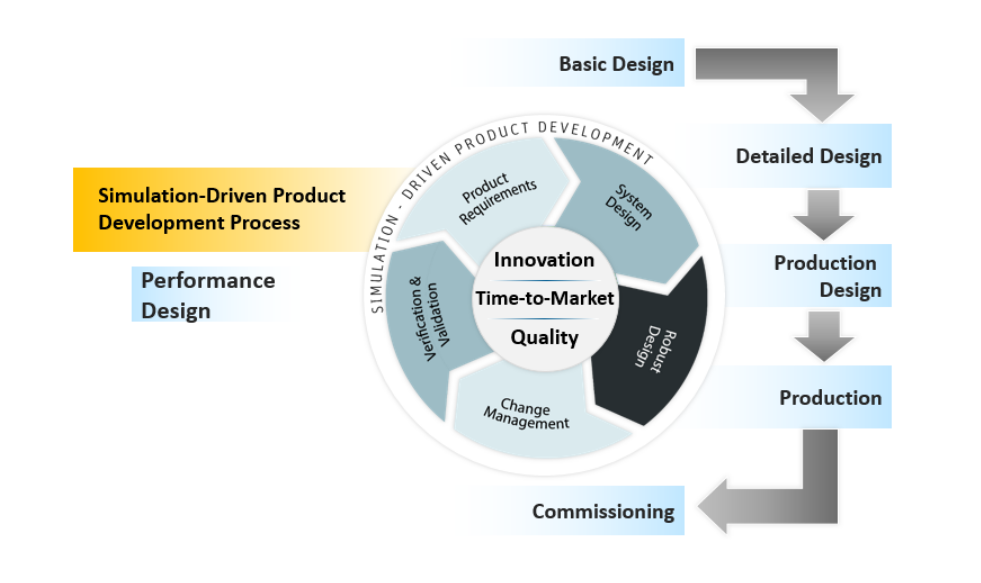
Computer simulation and virtual prototyping in the shipbuilding industry
In the modern era, more and more sophisticated and complex ships equipped with modern tools and systems, are required to be commissioned in a short span of time. The requirements demand a shorter design cycle yet optimized for safety, high-end equipment, speed, loading capacity, handling communication system, its stealth capacity, etc.
Computer simulation allows the engineer to design with a high degree of insight and to perform as much virtual testing on a computer as possible before committing to a particular design for prototyping. This is the power of incorporating Computer Aided Engineering (CAE) into the design process, allowing a compelling advantage to companies that are investing in virtual simulation.
For the shipbuilding industry, some of the key challenges are long design cycles, extremely complex designs, meeting contractual requirements, customizations for specific customer needs, geographical & environmental challenges. Long design cycles mean the cost of changes later in the cycle could be humongous.
Virtual prototyping allows evaluation of an entire product by bringing it into the design and innovation cycle and combining numerous physics to see how the product would operate in a real world environment. The most successful companies differentiate themselves by employing simulation technologies in the earliest stages of design to reduce development cycles and lower costs.
Significance of computer aided engineering (CAE)
Computer Aided Engineering (CAE) is the solution technique used for most engineering problems with the aid of highly developed computer systems that involve hardware and software. “Build and Test” prototyping involves high cost and high product development cycle time.
Moreover, repetition of experimental testing for various product designs is not feasible as it requires high investments. CAE is used to predict the actual behavior of products in the basic design stage and every stage of the design (such as performance design, basic design, detailed design and production design) cycle even before manufacturing. Developments of computer hardware and networking systems and well developed software CAE codes helped innovation in ship design and ship building.

While developing the performance and basic design, the designer relies on his collective knowledge, skill and understanding in many engineering areas. These may include material science, statics and stresses, dynamics, heat transfer, fluid mechanics, hull propeller interactions and vibration to name a few. The greater and more complete the understanding, the greater the probability that success is achieved in the model test in towing tanks.
Simulation driven product development (SDPD)
Ship builders race to create a design so that they can analyze, build, and test models in the towing tanks to confirm intended product functional performance. As a result, many changes occur along the way, so development schedules slip, costs skyrocket, and products often fall short of market and business requirements hence increasing the risk of customer dissatisfaction and/or recalls.
A new simulation-driven approach to product development represents a significant cultural change, a paradigm shift of up-front simulation. Now many of the commercial and military shipbuilding industries are performing simulation from the performance design stage to production design stage to explore alternatives, spot flaws, and optimize ship performance. This process allows important decisions to be made on functionality, geometry and materials early in the cycle based on simulation results. And it also helps to reduce the number of model tests which is a time consuming and expensive process.
A wide range of technologies are used in simulation-driven product development including multi-physics simulations, electromagnetics, fluid dynamics, structural analyses, fatigue and failure analyses, acoustic predictions and design optimization. Using these and other types of analysis tools in various phases of ship design, simulation guides the direction of the design to optimally satisfy performance, structural integrity, reliability, durability, cost and other requirements.
Most importantly, simulation guides critical trade-off decisions to balance objectives; reliability, speed of the vessel and weight requirements, as an example. Usually many conceptual alternatives are evaluated before detailed design is begun using the virtual lab.

Ansys solutions for shipbuilding industry
As a provider of Simulation Driven Product Development tools, Ansys is helping the industry’s leading companies master the integration of simulation in order to transform design concepts into top-selling products.
The solution is a virtual prototyping and modular nultiphysics simulation system that is easy to use, extends to meet customer needs, making it a low-risk investment and helps to deliver innovative products with a quick turn-around time. Further, systems simulations & design optimization enable robust design with reduced costs and time to market.

Advanced Simulations with Ansys Workbench
The geometric complexity and advanced physics involved in the modern shipbuilding applications present some of the most challenging simulation problems faced by engineers today.
Contractual pressures to create innovative & customized, yet robust products in less time emphasize the need to carry out more advanced simulations, faster than ever before.
Ansys tools are fully integrated on Ansys Workbench Platform with advanced physical modeling capabilities in all of the major analysis disciplines including structural, thermal, electromagnetics, fluids, multiphysics and systems with advanced optimization capabilities.
From structural strength to hydrodynamics, from wave loading to thermal management, from vibration analysis to antennae design, from propulsion efficiency to impact analysis, and many more studies, Ansys has products and application knowledge that is helping the shipbuilding industry to develop the optimized design as per the performance requirements, long before a model is ever built.
Comprehensive Multiphysics Modeling
To accurately assess product performance, the design must be analysed in its working environment and simultaneously account for the multiple physics. The Ansys Workbench platform provides a unified environment that hosts all advanced technologies, easily allowing for multiple physics to be analysed at one time.
Ansys Workbench technology stores the design concept in a virtual environment linked directly to the CAD model, allowing engineers to move toward true Multiphysics design optimization.
